Portuguese Laurel
Prunus Lusitanica portuguese laurel
In Winter our garden isn’t exactly something to rave about. However bog standard shrubs such as the Portuguese Laurel saves the day.

Growing Portuguese Laurel in Scotland
Well to be honest I thought that planting a shrub that comes from Portugal, Spain and other countries much warmer than Scotland may be a bit of a gamble.
How wrong could I be, turns out that the Portuguese Laurel Prunus Lusitanica is as hardy as old boots. Thrives in all areas of Scotland except for, maybe Braemar in the Highlands, or, perhaps you know better.
I love the glossy dark green leaves which are smaller and more eye-catching than those of the common Cherry Laurel which I profiled recently. (see link below)
Prunus Laurocerasus Cherry Laurel
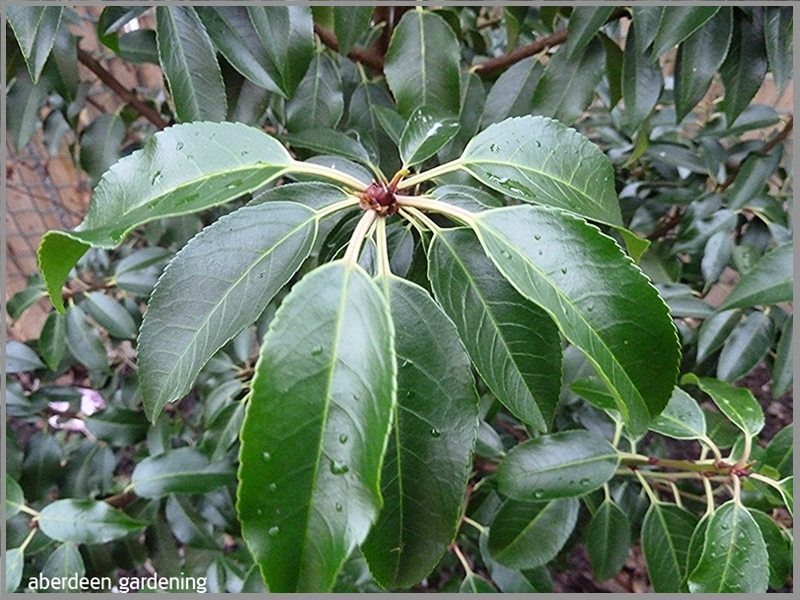
The Portuguese Laurel makes a grand evergreen hedge, stand alone specimen or topiary shrub.
Panicles of very beautiful white flowers appear in late May/June followed by red berries which later turn purple. If you are not so fond of the stiff candle-like blooms of the common Laurel I am sure you will favour the more eye-catching flowers of the Portuguese Laurel.
Our Portuguese Laurel did not bloom last year. I am hoping it was just a settling in thing. In the meantime I have broken my rule and used a google stock picture. Hopefully I will get the chance to replace this very fine photo come Summer.

Below is a picture of the Laurel taken in late Summer. It does need to fill in a bit but I am loath to do any pruning until I find out if it is going to bloom this coming Summer. If it doesn’t, I reckon it is simply because I have positioned it where it isn’t getting quite enough sunshine.
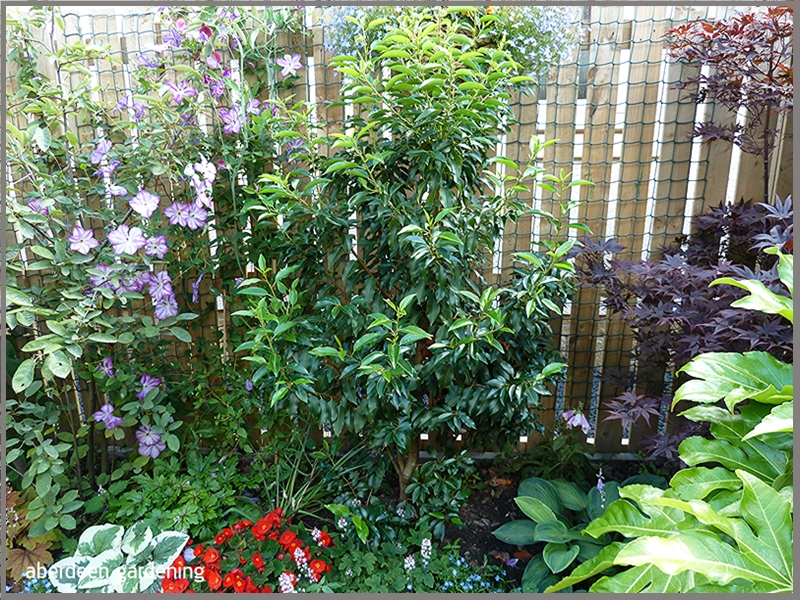
Portuguese Laurel Quick read details
Hardiness
fully hardy throughout the UK
Height
You can leave it to grow and it will eventually be a tree of about 30 feet, or it can be kept in check with regular pruning.
Pruning
Portuguese Laurel copes well with pruning, in fact you can do so three times per year, February,July and October. Of course you will never see the flowers or berries. You could however try pruning once a year just, after the flowers have gone over.
Leaves and Flowers
The dark green glossy leaves are small and slightly serrated at the edges, looking good all year round. Panicles of attractive white scented flowers appear in June followed by masses of red berries which later turn black. (the birds love them)
Position and soil
Full sun with a preference for partial shade. Any reasonable garden soil will do.
Uses
Brilliant for a garden hedge or stand alone specimen. Or you could get creative with your topiary skills.
Awards
RHS award of garden merit
Late December early January in the garden
Not a lot going on, the garden is screaming for a hint of Spring. The snowdrops, Crocus and Daffs are just poking through the soil, flowers are few and far between, other than Primulas. I usually just treat these Primulas as Spring annuals, when I lifted them from the borders at the end of May last year I decided to pot them up and place them in a utility area. Having planted them back in the borders in early October they were keen to start flowering. I took it into my head that this would affect the Spring performance so I continually nipped out the growing buds. I am honestly not sure if this is a necessary requirement.
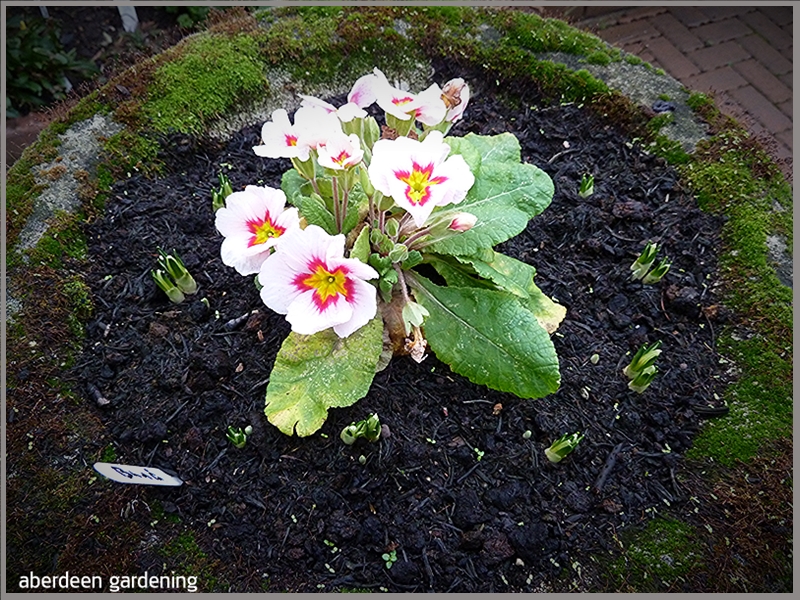
The Holly-ilex-aquifolium-pyramidalis is self-fertile and produces masses of berries in Autumn/Winter. The one below is in our front garden.

Buddleja-Lochinch, I like the grey leaves of this one which start to appear as soon as the old ones drop.
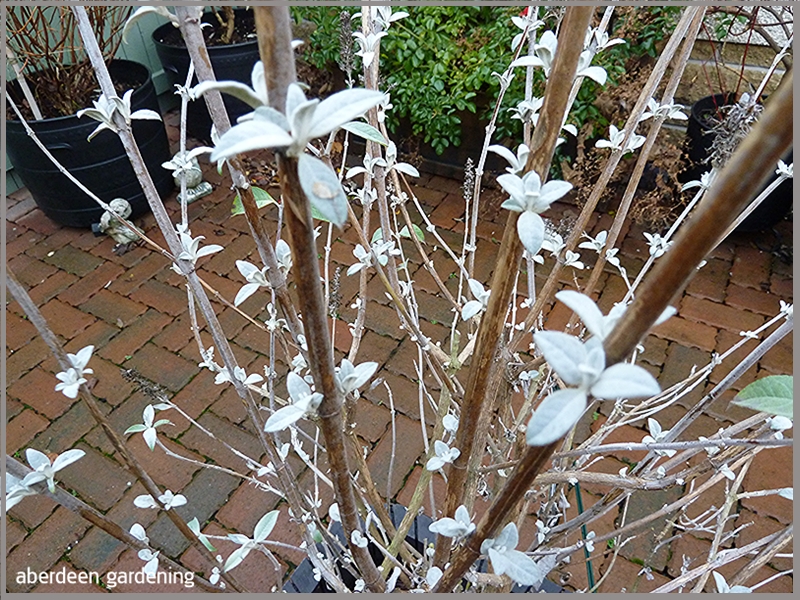
End of December and the last rose standing is, Flower Carpet-rose-red.

In the front garden is a true Winter flowering shrub, Viburnum Tinus Spirit. Shorter and slower in growth than the common Viburnum Tinus.
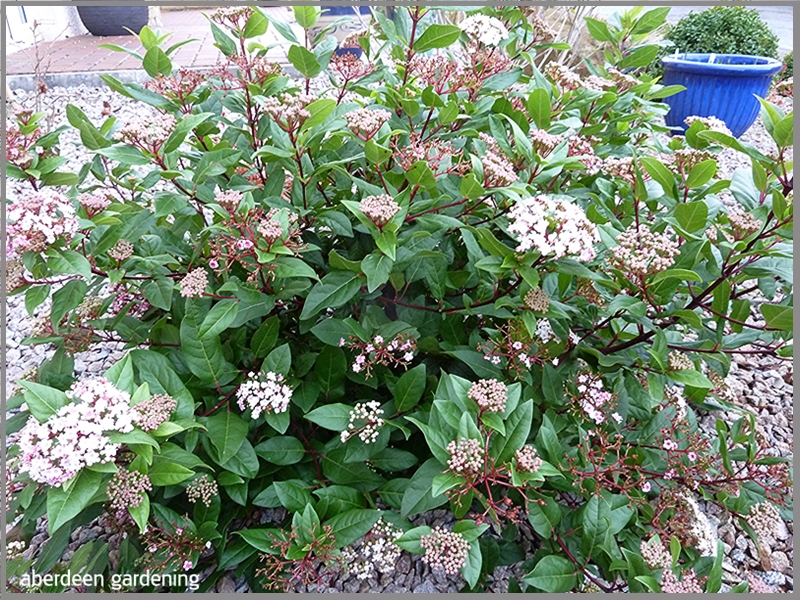
Sitting in a large tub at the back door is the very early flowering
Camellia-Williamsii-Anticipation. Blooms start to open in February.
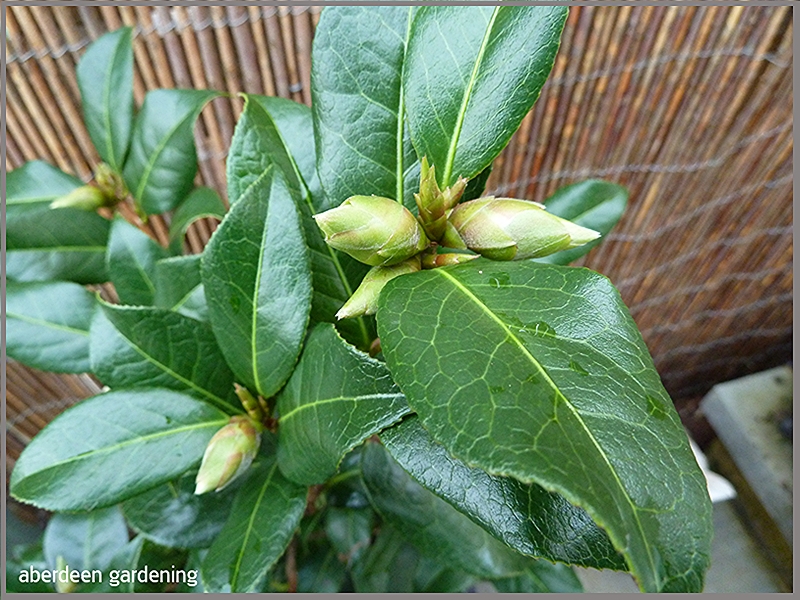
Still my favourite of the evergreen shrubs in our garden is the Skimmia Temptation. Looking fabulous with berries and flower buds in early January.


Pingback:Early to bloom Heleniums - Aberdeen Gardening % %
Initially, things do get going a bit sooner here, but you know how raw it can be in Scotland
I love laurels and this one adds great winter interest to your garden, Alistair. I think you have a lot going on compared with my desolate space! Spring comes so much earlier to your location than here — I look forward to seeing your spring flowers in anticipation of mine. Happy new gardening year! P. x
The Buddleja-Lochinch is planted in a large pot, I am keen to see how it does this year.
Your Viburnum Tinus Spirit and Skimmia Temptation are really beautiful, but I was thrilled to see your Buddleja-Lochinch. This was one of the first plants I ever purchased for my garden, many years ago. I loved everything about it! It flourished for a number of years but eventually it began to suffer from various ailments. I was sad when I had to remove it. Seeing yours makes me want another one.
Thanks for the information Frances, too cold in Braemar and too windy in West Lewis.
hello Alistair,
you can add the west side of Lewis to places where laurels don’t grow, it has been my experience that broadleaf evergreens are eventually killed by the strength of the winter winds, I have lost many and so no longer buy them, though I have found needle leaf evergreens do better, like rosemary and olearia, I hope you get some laurel flowers this summer and I look forward to seeing them on your blog,
I do like that lovely little primula, such pretty flowers with their red and yellow eye,
you have some lovely broadleaf evergreens in your garden, Frances
Excellent as usual Alistair. Happy new year
Hello Nadezda, here in the UK the Cherry Laurel is the (common Laurel Prunus laurocerasus) Have a great gardening year.
Skimmia and Viburnum are so lovely Alistair, especially in winter time. Looking at your Portuguese Laurel flowers I thought it’s the Prunus padus that I have in my garden. But no! We call Portuguese Laurel ‘ Laurel cherry’.
Happy new year!
Hi Pauline, I think the Portuguese Laurel is undoubtedly superior, I have yet to find out if it is willing to flower in the East coast of Scotland.
The flowers on your Portuguese Laurel are beautiful, a very good reason to buy it! I have loads of the ordinary laurel, maybe I should replace some of them!